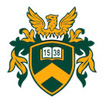Novák Ádám (szerk.): Fontes Memoriae Hungariae III. Varsóban őrzött magyar vonatkozású oklevelek, 1439–1489. Közreadja: Novák Ádám, Tóth Orsolya és Tóth Péter (Debrecen, 2019)
Sobiesław Szybkowski: Polish-Hungarian Relations between 1437 and 1490. A Short Introduction
XXV rest of Prussia was ruled by the Grand Masters of the Teutonic Knights who were Polish vassals.80 However, the Second Peace of Toruń was not confirmed by the Pope, which gave the Grand Masters a chance to annul it in a favourable political moment. Moreover, almost directly after the treaty came into force, Casimir Jagiellon had to deal with the problem of appointing the Bishop of Warmia. In 1467 Nicolaus von Tungen became the Bishop of Warmia without the king’s consent.81 This choice was confirmed by the Pope and Tungen kept his position despite the objections raised by the Polish king. During his conflict with Casimir, Tungen was backed by the Teutonic Knights and King Matthias, who was looking for allies against the Jagiellons. Already in 1474, the King of Hungary disclosed his alliance with Tungen when he ordered for the Bishop of Warmia to be included in the Wrocław armistice.82 Soon the Grand Master of the Teutonic Knights, Heinrich Reffle von Richtenberg, and from 1477 his successor, Martin Truchseß von Wetzhausen, joined the anti-Polish alliance. With papal support behind his back, he was openly trying to annul the Second Peace of Toruń to end the vassalage to Poland and to re-establish the authority of the Teutonic Order over the whole of Prussia. Preoccupied with Prussia, Casimir Jagiellon could not deploy the Polish forces in the continuing conflict over the Bohemian throne or help his Habsburg allies in the war they waged with Corvinus. Therefore, the alliance which Matthias formed with the Bishop of Warmia and Martin Truchseß was definitely a significant diplomatic success. The conflict in Prussia ended in the so-called Priest war (“Pfaffenkrieg”) which lasted from 1478 to 1479.83 Even though there was no Hungarian military 80 Biskup, 1967. 703–709. 81 Kozłowski, Edward: Mikołaj Tungen. Spór o biskupstwo warmińskie (1467–1479). T. 1. Sprawozdanie Dyrekcji C.K. Gimnazjum w Bochni (1896). 1–25.; Schmauch, Hans: Der Kampf zwischen dem ermländischen Bischof Nikolaus von Tüngen und Polen oder der Pfaffenkrieg (1467–1479). Zeitschrift für Geschichte Und Altertumskunde Ermlands 25. (1933). 69–125. Boraw ska, Danuta: Tungen Mikołaj. In: Słownik biograficzny Pomorza Nadwiślańskiego . Ed. Nowak, Zbigniew. Gdańsk, 1997. 387.; Pósán, László: Matthias Corvinus und der Deutsche Orden. In: Matthias and his Legacy. 437–444. 437–438., 440. 82 Kozłowski, 1896. 25.; Schmauch, 1933. 125.; Górski, 1982. 490–491., 493., 496.; Baczkowski, 2014. 138. 83 Kozłowski, Edward: Mikołaj Tungen. Spór o biskupstwo warmińskie (1467–1479), T. 2. Spra wozdanie Dyrekcji C.K. Gimnazjum w Bochni (1897). 1–19.; Schmauch, 1933. 126–170.; Górski, 1982. 490–491., 494–495.; Pósán, 2009. 440–443.; Plewczyński, Marek: Wojna księża na Warmii 1470–1479. Studia i Materiały do Dziejów Wojskowości 38. (1996). 19–42.; Idem : Działania polskie w południowej Warmii podczas wojny księżej (15 września–16 października 1479). Komunikaty Mazursko-Warmińskie 4. (1997). 573–577.; Możejko, Beata: Brodnica, Chełmno i Starogród w czasie wojny popiej (1467–1479). Studia z Dziejów Średniowiecza 7. (1997). 125–144.; Kalous, 2009. 152–153.; Bárány, Attila: Matthias` European Diplomacy in the 1480s. In: Matthias and his Legacy. 363–392. 375.; Baczkowski, 2014. 150–154., 178–181.
